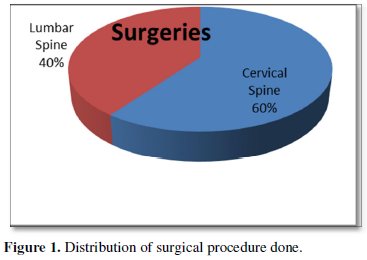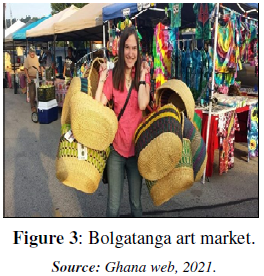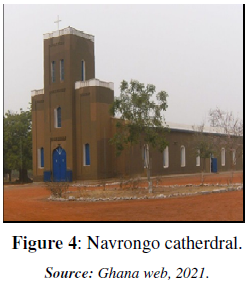Review Article
Bioengineering of Bone Marrow Endothelial Cells, the Prospect of Bone Microenvironment as Therapeutic Measures
1203
Views & Citations203
Likes & Shares
The bone marrow endothelial-vascular niche facilitates the proliferation, differentiation, and survival of hematopoietic stem cells (HSCs) and non-hematopoietic stem cells such as osteoblast/osteoclast and mesenchymal stem cells. This fertile microenvironment is a safe place not only for healthy cells and malignant hematopoietic cells but also for a tumor the spreads to the bone, endeavor protection to chemotherapeutic agents by common pathways. This occurs by secretion of the SDF-1 from arteriole-sinusoidal associated stromal cells (CAR, LepR+ nest-MSC), vascular endothelial cadherin (CD144), E-selectin, VEGFR, and angiopoietin-1 (Ang-1) contribute to the maintenance of the HSCs. Research in tissue in engineering and regenerative medicine has continued to show development toward the potential treatment of chemotherapy-resistant malignancy and structural genetic disease. Therefore, an experiment focusing on extracting endothelial stem cells and reprograming with CRISPR/cas9 gene editing can be used to evaluate all disorders from reconstruction and regeneration of blood-related genetic disease and drug-resistant malignancy.
Keywords: Bone marrow microenvironment (BMM), Bone marrow endothelial cells (BMECs), Endothelial-vascular niche, Hematopoietic stem cells (HSCs)
INTRODUCTION
In the bone marrow microenvironment, the endothelial vascular niche provides the vascular network structure and release molecules that are involved in the recruitment of hematopoietic stem cells (HSCs) and non-hematopoietic stem cells such as endothelial progenitor cells (EPCs), mesenchymal stem cells (MSCs), fibroblast, osteoblasts/osteoclasts, macrophages, T lymphocytes, and mast cells [1,2]. The term endothelial -vascular niche indicates the proximity to the bone marrow vascular rich in blood vessels specialized in mobilization, proliferation, and differentiation of the HSCs-the bone marrow microenvironment consists of arteriolar vascular place and sinusoidal endothelial slot. The sinusoidal endothelial vessel supplies oxygen, nutrient, and growth factors to the HSCs to promote proliferation and differentiation. It also encourages the mobilization and homing of cytokines through chemokines such as stromal cell factor (SCF), CSF2, and Flt3 [3,4]. The endothelial cells within the sinusoidal vessel express the adhesion molecules such as vascular endothelial growth factor receptor (VEGFR), selectin molecules [E-Selectin (CD62E), P-selectin (CD62P)], and intracellular adhesion molecule-1 (ICAM-1). These adhesion molecules provide cell-cell interaction and extracellular matrix that play a role in homing, regulation of apoptosis, immune response to inflammation, and lymphocyte proliferation and differentiation [5-7]. The arteriolar niche unsheathed exclusively by NG2 pericyte (Nest-GFP+ NG2+) distinct from the sinusoidal vessel. The SDF-1 secreted from arteriole-sinusoidal associated stromal cells (CAR, LepR+ nest-MSC), vascular endothelial cadherin (CD144), and VCAM-1 and angiopoietin-1 (Ang-1) contribute to the maintenance of the HSCs [3,4] (Figure 1).

The illustration of the arteriolar (NG2+ arteriolar pericyte cells) and sinusoid vascular (LepR+CAR cells) niche in the bone marrow microenvironment. It shows the relation between the hematopoietic stem cells (HSCs) and non-hematopoietic cells such as osteoblast, osteoclast, extracellular matrix, mesenchymal stem cells, and sympathetic non-myelinating Schwann cell. It also described the secreting cytokines such as SCF, CXCL12, CXCL4, and E-selectin that promote recovery of the HSCs.
Morphology and bioengineering of bone marrow endothelial cells
In the sinusoid- endothelial vascular niche of the bone marrow niche, endothelial cells play a critical role in establishing the sinusoid vessel’s vascular network. This characteristic morphology of the endothelial cells is associated with proliferation, differentiation, elongation, and assembly to form cord-like vessels/ capillary lumen called vascular networks [8-10]. These vascular structures line the interior of the sinusoidal vessels and maintain tissue hemostasis by delivering oxygen, growth factors, and nutrients and eliminating waste products. The angiogenesis of the endothelial cells involves the activation of resting cells by vascular endothelial cells growth factor (VEGF) and fibroblast growth factor (FGF). With the degradation of the basement membrane, the tip of the cells starts to increase and elongate to form the capillary spindles, which then assembly to form the perusable lumen [11,12]. The use of two-dimensional (2D)-cell culture of bone marrow endothelial cells will be difficult to maintain the in-vivo characteristic of the endothelial cells within the vascular niche due to the monolayer attached of the cells to the plastic dish. The formation of an endothelial vascular network in 2D-monolayer cell culture and evaluation of angiogenesis has been challenging over the years. However, the introduction of the three-dimensional (3D) engineered tissues research can now elicit the angiogenesis function of these cells supplement with growth factors and their response to inflammatory stimuli [13,14]. Successful application of these methods, either separately or in combination, is expected to improve the therapeutic strategy and develop functional cells for regenerative endothelial stem cells (Figure 2).


The bone marrow niche is the home of normal and malignant stem cells
The bone marrow microenvironment is fertile for primary and secondary tumors such as osteosarcoma, leukemia, lymphoma, multiple myeloma, breast cancer, and prostate cancers. Structural and architectural cues tightly regulate the endothelial-vascular niche. The vascular wall barriers supply oxygen, growth factors, nutrients, and drug delivery [15,16]. High doses of chemotherapeutic agents may cause damage to the endothelial-vascular barrier wall, increase permeability, altered perfusion and release normal hematopoietic stem cells into the periphery. Recently, the relapse of myeloid malignancy or lymphoma due to engraftment of the tumor in the bone marrow niche. These dynamic changes include the expression of adhesion molecules involved in cell migration and interaction of the extracellular matrix. The invasion of the malignant cells into the bone marrow environment may hijack the hemostatic mechanism of the endothelial-vascular network, take refuge within the bone marrow niche during chemotherapy, and eventually contribute to the disease's relapse [2,5,17]. The existence of the malignant stem cells in the bone marrow microenvironment is due to the interactions of CXCR4/ CXCL12(SDF-1), very late antigen-4 (VLA-4)/ vascular adhesion molecule (VCAM-1), vascular endothelial cell growth factor (VEGF)/ vascular endothelial growth factor receptor (VEGFR) and CD44/ E-selectin respectively. These molecular pathways support the survival, proliferation, adhesion, and angiogenesis of malignant stem cells. Therefore, targeting these molecular pathways by newer chemotherapeutic agents or recombinant immunotherapy may serve as a new therapeutic measure to improve the prognosis of patients with the reoccurrence of hematological malignancies [18-22] (Figure 3).
The prospect of bone marrow endothelial cells by using CRISPR/cas9 genomic editing
Recently, the development of clustered regularly interspaced short palindromic repeats (CRISPR) molecular scissors that cut DNA for effective gene editing. These technological tools allow the researcher to altered the potential DNA sequence and modify gene function. The CRISPR methodology has been employed to participate in human endothelial cells by mutating cultured endothelial cells to produce a homogenous population. The generation of bone marrow endothelial cells could be for conventional gene therapy, drug discovery and transplantation for hematological genetic disease, and chemotherapeutic resistant malignancies [23,24] (Figure 4).




- Benz C, Copley MR, Kent DG, Wohrer S, Cortes A, et al. (2012) Hematopoietic stem cell subtypes expand differentially during development and display distinct lymphopoietic programs. Cell Stem Cell 10(3): 273-283.
- Kumar R, Godavarthy PS, Krause DS (2018) The bone marrow microenvironment in health and disease at a glance. J Cell Sci 131(4): jcs201707.
- Coşkun S, Hirschi KK (2015) Vascular Niche in HSC Development, Maintenance and Regulation.
- Kunisaki Y, Bruns I, Scheiermann C, Pinho S, Zhang D, et al. (2012) Bone Marrow Arteriolar Niches Maintain Hematopoietic Stem Cell Quiescence. Blood 120(21): 638.
- Kaplan RN, Riba RD, Zacharoulis S, Bramley AH, Vincent L, et al. (2005) VEGFR1-positive hematopoietic bone marrow progenitors initiate the pre-metastatic niche. Nature 438(7069): 820-827.
- Ding L, Saunders TL, Enikolopov G, Morrison SJ (2012) Endothelial and perivascular cells maintain hematopoietic stem cells. Nature 481(7382): 457-462.
- Winkler IG, Barbier V, Nowlan B, Jacobsen RN, Forristal CE, et al. (2012) Vascular niche E-selectin regulates hematopoietic stem cell dormancy, self-renewal and chemoresistance. Nat Med 18(11): 1651-1657.
- Kopp HG, Hooper AT, Avecilla ST, Rafii S (2009) Functional heterogeneity of the bone marrow vascular niche. Ann N Y Acad Sci 1176: 47-54.
- Yin T, Li L (2006) The stem cell niches in bone. J Clin Invest 116(5): 1195-1201.
- Smith AO, Adzraku SY, Ju W, Qiao J, Xu K, et al. (2021) A novel strategy for isolation of mice bone marrow endothelial cells (BMECs). Stem Cell Res Ther 12(1): 1-
- Eklund L, Saharinen P (2013) Angiopoietin signaling in the vasculature. Exp Cell Res 319(9): 1271-1280.
- Calvo CF, Fontaine RH, Soueid J, Tammela T, Makinen T, et al. (2011) Vascular endothelial growth factor receptor 3 directly regulates murine neurogenesis. Genes Dev 25(8): 831-844.
- Kapałczyńska M, Kolenda T, Przybyła W, Zajączkowska M, Teresiak A, et al. (2018) 2D and 3D cell cultures - a comparison of different types of cancer cell cultures. Arch Med Sci 14(4): 910-91
- Arnaoutova I, Kleinman HK, George J, Benton G (2012) The In Vitro Endothelial Cell Tube Formation Assay in 3D Culture on Gelled Basement Membrane Extract. In: The Textbook of Angiogenesis and Lymphangiogenesis: Methods and Applications. pp: 1-10
- Mishra A, Shiozawa Y, Pienta KJ, Taichman RS (2011) Homing of cancer cells to the bone. Cancer Microenviron 4(3): 221-235.
- Sahin AO, Buitenhuis M (2012) Molecular mechanisms underlying adhesion and migration of hematopoietic stem cells. Cell Adh Migr 6(1): 39-48.
- America N, Anderson K, Lutz C, van Delft FW, Bateman CM, et al. (2015) Selective inhibition of cell death in malignant vs normal B-cell precursors: Implications for cAMP in development and treatment of BCP-ALL. Blood 121(10): 1805-1813.
- Kim M, Koh YJ, Kim KE, Koh BI, Nam DH, et al. (2010) CXCR4 signaling regulates metastasis of chemo resistant melanoma cells by a lymphatic metastatic niche. Cancer Res 70(24): 10411-10421.
- Nagasawa T (2007) The chemokine CXCL12 and regulation of HSC and B lymphocyte development in the bone marrow niche. Adv Exp Med Biol 602: 69-75.
- Cook-Mills JM, Marchese ME, Abdala-Valencia H (2011) Vascular cell adhesion molecule-1 expression and signaling during disease: Regulation by reactive oxygen species and antioxidants. Antioxid Redox Signal 15(6): 1607-1638.
- Hassanshahi M, Hassanshahi A, Khabbazi S, Su YW, Xian CJ (2017) Bone marrow sinusoidal endothelium: Damage and potential regeneration following cancer radiotherapy or chemotherapy. Angiogenesis 20(4): 427-442.
- Prabhakarpandian B, Goetz DJ, Swerlick RA, Chen X, Kiani MF (2001) Expression and functional significance of adhesion molecules on cultured endothelial cells in response to ionizing radiation. Microcirculation 8(5): 355-364.
- Rodríguez-Rodríguez DR, Ramírez-Solís R, Garza-Elizondo MA, Garza-Rodríguez MDL, Barrera-Saldaña HA (2019) Genome editing: A perspective on the application of CRISPR/Cas9 to study human diseases (Review). Int J Mol Med 43(4): 1559-15
- Abrahimi P, Chang WG, Kluger MS, Qyang Y, Tellides G, et al. (2015) Efficient gene disruption in cultured primary human endothelial cells by CRISPR/Cas9. Circ Res 117(2): 121-12
QUICK LINKS
- SUBMIT MANUSCRIPT
- RECOMMEND THE JOURNAL
-
SUBSCRIBE FOR ALERTS
RELATED JOURNALS
- Journal of Clinical Trials and Research (ISSN:2637-7373)
- Journal of Forensic Research and Criminal Investigation (ISSN: 2640-0846)
- Dermatology Clinics and Research (ISSN:2380-5609)
- Journal of Cardiology and Diagnostics Research (ISSN:2639-4634)
- Oncology Clinics and Research (ISSN: 2643-055X)
- International Journal of Anaesthesia and Research (ISSN:2641-399X)
- Journal of Spine Diseases





